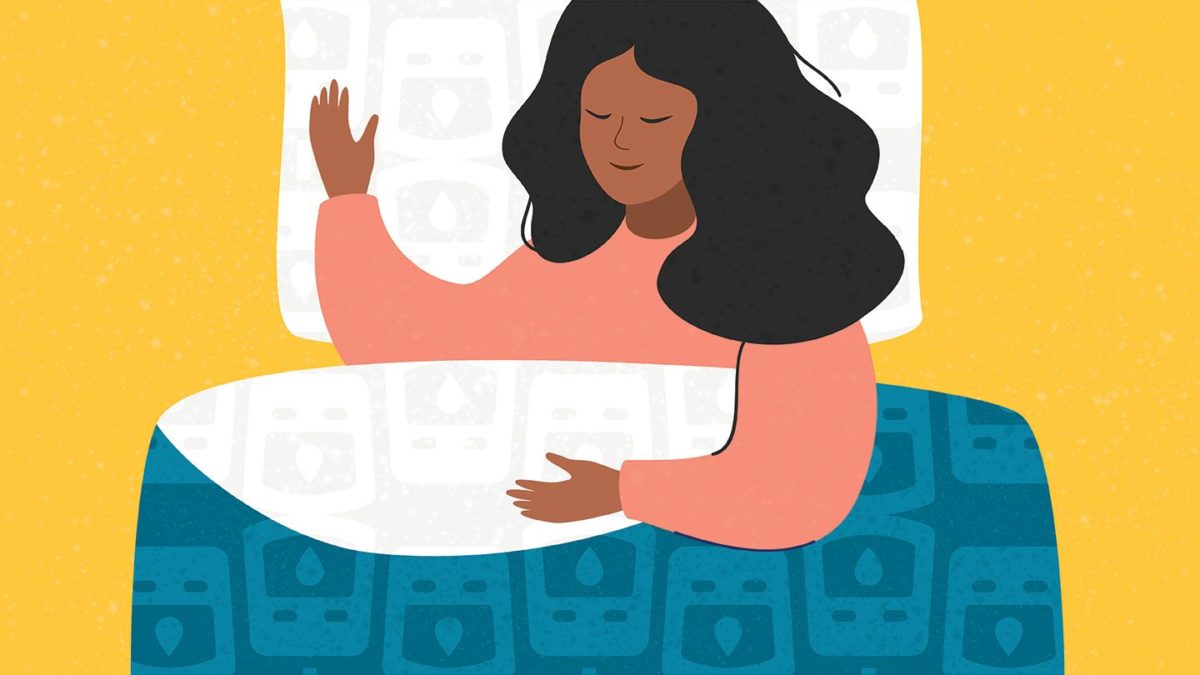Sleep is important for everyone, but it’s especially important when your body experiences changing blood sugar levels and other symptoms of type 2 diabetes. “Sleep deprivation causes changes in the effectiveness of the body’s control of appetite, which can lead to weight gain, higher blood sugar, and increased resistance to insulin,” says Richard Castriotta, MD, director of the division of pulmonary, critical care, and sleep medicine at the University of Texas Health Science Center at Houston.
Although sleep is very important when you have type 2 diabetes, you may find you can’t sleep when you need it most. One explanation for the problem seems to be the connection between diabetes and sleep apnea. Sleep apnea is a condition that’s characterized by periods of halted breathing while you’re asleep, which wakes you up repeatedly throughout the night, leaving you fatigued and not well rested in the morning.
Both type 2 diabetes and sleep apnea are health concerns that are linked to obesity, so experts have long recognized a connection between the two. However, only recently has it been realized how closely these conditions are tied to one another. “There’s much more interrelation between the two conditions than we thought,” says Betul Hatipoglu, MD, a physician in the Cleveland Clinic’s department of endocrinology, diabetes, and metabolism. “In fact, one may actually contribute to causing the other, and vice versa. Recent studies have shown that sleep apnea actually increases insulin resistance, hunger, and other type 2 diabetes symptoms,” Dr. Hatipoglu says. “Other studies have shown that treating sleep apnea also improves the symptoms of type 2 diabetes.”
Other Sleep Issues You Might Face
Another problem that disrupts sleep is frequent urination, a common symptom of type 2 diabetes. You can’t sleep if you have to keep getting up to go to the bathroom. Hatipoglu says this problem is usually tied to high blood pressure, which is also common with type 2 diabetes. As your blood pressure goes up throughout the night, the need to urinate increases. “If this occurs more than once a night, we view it as an issue that needs to be treated,” Hatipoglu says.
Having type 2 diabetes may also lead to other disorders that make it harder to sleep. “In addition to sleep apnea, people with type 2 diabetes are at increased risk for restless leg syndrome (RLS) and periodic limb movements in sleep (PLMS), as well as neuropathy and pain-associated sleep disruption,” Dr. Castriotta says. “RLS causes difficulty falling asleep because of strange feelings in the legs beginning in the evening before sleep. PLMS may cause either sleep-maintenance insomnia (difficulty staying asleep) or a feeling of non-refreshing sleep and daytime sleepiness due to slow, rhythmic limb movements during sleep.”
Tips to Get a Good Night’s Sleep
The first step in managing your sleep problems with type 2 diabetes is to see a doctor or a sleep specialist. Sleep apnea is a serious, potentially life-threatening problem that needs medical attention to remedy. Frequent urination and other sleep-depriving issues should also be treated by a medical professional.
In addition to talking to your doctor and seeing a sleep specialist, here are some additional strategies that may help you sleep:
Reduce your caffeine intake. Caffeinated beverages can keep you up at night and increase the urge to urinate throughout the night. If you can’t cut caffeine out entirely, Hatipoglu recommends to at least eliminate your intake in the afternoon and evening.
Curb the use of electronics in the bedroom. Television is a no-no in the bedroom, as it will keep you up when you need to be focusing on resting. Watch TV in another room, and turn it off at least an hour before you want to nod off. Try reading a book or listening to relaxing music instead.
Keep your bedroom cool, dark, and calm. Removing all light from the room, using light-blocking curtains, and outfitting your bed with appropriate bedding helps to create an atmosphere that is conducive to sleep.
Create a regular bedtime schedule. Hatipoglu says you need to train your body to get a good night’s sleep. One of the most important ways you can do this is to create a scheduled bedtime and stick to it as closely as possible each night. You can incorporate things into this routine that get your body ready for bed, such as having a few sips of relaxing chamomile tea, meditating, or doing deep breathing exercises before you close your eyes.
Sleep issues are a troubling side effect of type 2 diabetes that can leave you feeling tired all the time. By taking these steps and working with your medical team, you should be able to have sweet dreams every night.












